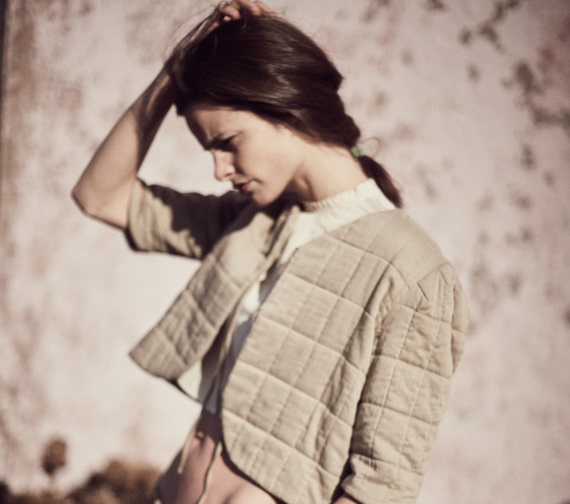In our Belgian fashion series, our fashion expert Jeanie Keogh tracks down another talented local designer who gives new life… to old clothes.
Cross the threshold into Eva Velazquez’s store in Ixelles and you enter a time warp. It is no longer 2016 in Brussels, but rather 1920s countryside. The décor says it all – leather suitcases and satchels, typewriters, books made from parchment, mesh bags that people back in the day would use to carry fowl and wild game home from market.
The world of yesteryear Velazquez has lovingly recreated comes from her nostalgia for a time when people worked hard, valued what they had, and were “more in alignment with what was real,” she says.
She calls it “slow fashion”, a deliberate move away from the fashion calendar and the consumption-driven nature of the business.
Her collection is a mix of old and new. The old is an assortment of second-hand garments she has searched high and low for at flea markets and yard sales in Spain, Britain, France and New York; well-worn clothes that have been through the trenches of the industrial age and tenderly restored to their former glory. Once she has found something she covets – be it a pair of factory coveralls that have been patched many times over, or hand-stitched peasant skirts that have been hemmed up and down and up again – she repairs, washes and irons them to give them yet another life. She even makes her own soap to remove the stains and sources old-fashioned buttons that need replacing.
“We really try to respect the garments and to treat them in such a way so as to be able to pass them on, like they would have been taken care of at the time. Back then they didn’t throw away clothes; they were passed on from generation to generation. Today, you can go into an old house and find these old suitcases or trunks and there is a whole story belonging to a family inside. It was a totally different approach with regard to how to maintain things.”
You could call her a fashion historian, keen as she is to tell the story behind the utilitarian function of the clothes she restores.
“In the olden days, clothing had a use and we’ve lost the traces of this. And that’s what’s really important to us, to return to our values and origins. Clothing is an important part of life, wearing clothes is part of being human, it’s like food – it’s part of the basics, and it’s a major part of our identity. With this process, we really wanted to work with clothes from an era when they were used either for work, or for private life inside the home.”
She pauses to delicately finger a cotton negligee with elegant lace detailing, pointing out how much effort and care went into making an undergarment that no one saw, save the woman and her husband.







